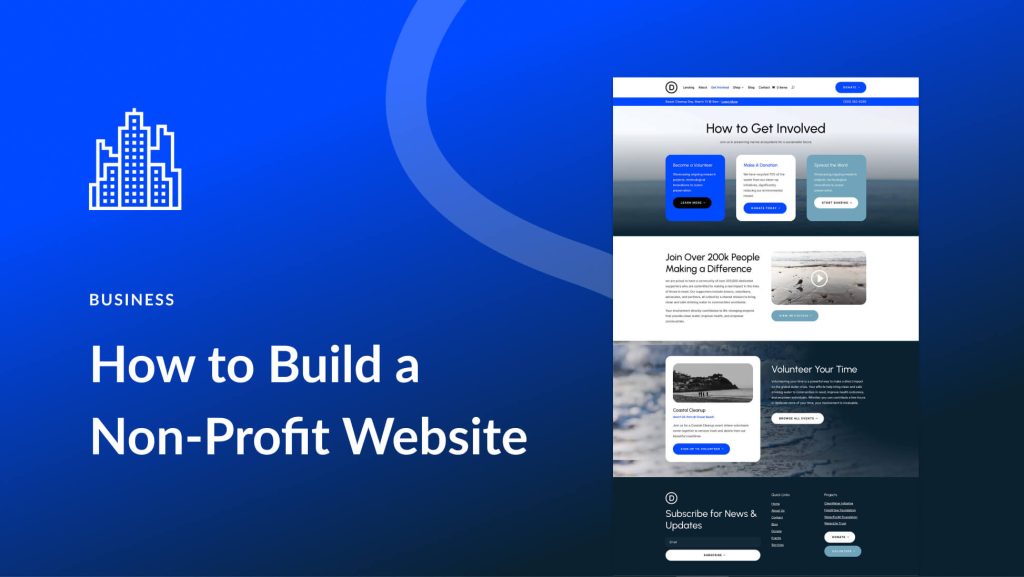Want to build a website quickly & easily? Discover the best tools and steps to create a stunning site without coding. Get online in minutes!
Whether you’re starting a new business or sharing your passion online, having a website is crucial. Many people think it’s difficult or expensive to build a website, but that’s not true anymore. With platforms like NoCode University, you can learn to build stunning websites without writing a single line of code. This platform offers courses on tools like Airtable, Notion, and Zapier, helping you create professional, functional websites. Ready to build your own website? Check out NoCode University here and get started today.
Introduction To Building A Website
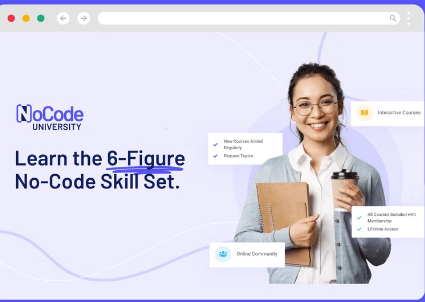
Building a website can seem like a daunting task. With the right tools and guidance, it becomes quick and easy. This guide will walk you through the process of creating a functional and attractive website.
Why Building A Website Is Important
Having a website is crucial in today’s digital age. It helps you reach a wider audience and showcases your products or services. A website also establishes your credibility and provides a platform for engaging with customers.
Who This Guide Is For
This guide is perfect for beginners and non-techies. If you have no prior experience in website building, you are in the right place. We will use simple language and short sentences to ensure you understand each step.
What You Will Learn
By following this guide, you will learn:
- Choosing the right platform for your website
- Setting up your domain and hosting
- Designing your website layout
- Adding essential features and functionalities
- Maintaining and updating your website
This guide will help you build a website without any coding knowledge. You will get practical insights and hands-on learning experiences.
| Topic | Details |
|---|---|
| Platform Selection | Choose between WordPress, Wix, or NoCode University |
| Domain & Hosting | Register your domain and select a hosting provider |
| Design | Use templates to create a user-friendly layout |
| Features | Add contact forms, galleries, and other functionalities |
| Maintenance | Learn how to keep your website updated |
Ready to get started? Let’s dive into building your website quickly and easily.
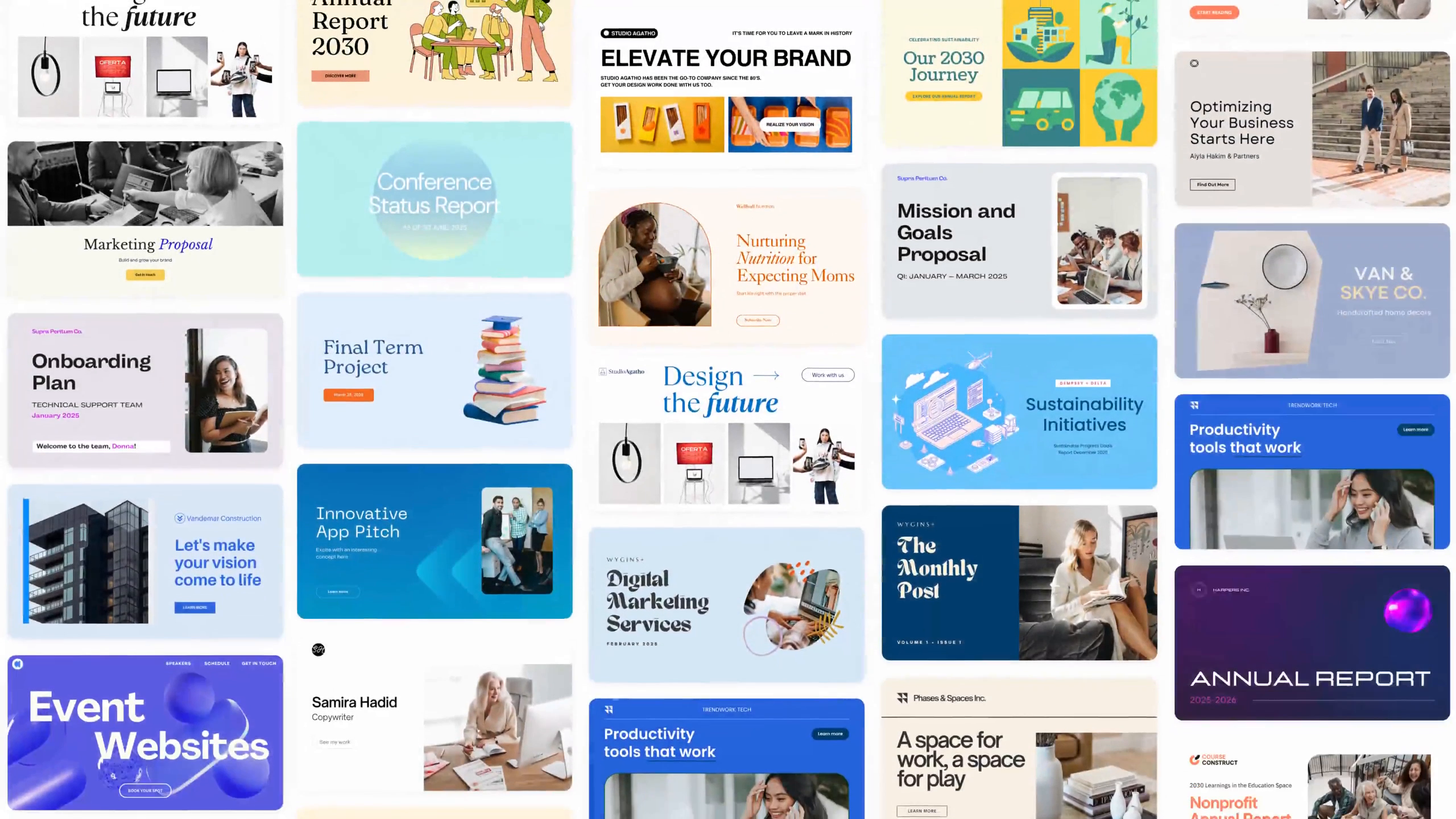
Credit: www.canva.com
Planning Your Website
Planning your website is the first crucial step in building a successful online presence. This phase involves defining your website’s purpose, choosing the right platform, and selecting a domain name. Each step is vital to ensure your website meets your needs and goals.
Defining Your Website’s Purpose
Start by clearly defining your website’s purpose. Ask yourself: What do you want to achieve with this website? Common purposes include:
- Showcasing a portfolio
- Blogging
- Launching an online store
- Providing information
- Offering services
Understanding your website’s purpose will guide your decisions on design, content, and functionality.
Choosing The Right Platform
Choosing the right platform is essential for building your website quickly and easily. There are many platforms available, each with its own strengths:
| Platform | Features |
|---|---|
| WordPress | Highly customizable, large community, lots of plugins |
| Wix | User-friendly, drag-and-drop builder, many templates |
| Squarespace | Beautiful designs, all-in-one platform, hosting included |
| NoCode University | Learn to build websites without code, lifetime access to courses |
Consider your technical skills, budget, and the complexity of your website when selecting a platform.
Selecting A Domain Name
Selecting a domain name is a key part of your website’s identity. It should be:
- Short and memorable: Aim for a name that is easy to remember and type.
- Relevant: Choose a name that reflects your website’s purpose or brand.
- Unique: Ensure your domain is unique to avoid confusion with other websites.
Use domain registration services like GoDaddy, Namecheap, or Google Domains to check availability and register your domain.
With these steps, you can lay a strong foundation for your website, ensuring it aligns with your goals and attracts your target audience. Happy building!
Setting Up Your Website
Creating a website can seem like a daunting task. But with the right tools and steps, you can build a professional site quickly and easily. Below, we’ll guide you through the essential steps to get your website up and running.
Registering Your Domain
Your domain name is your website’s address on the internet. It’s important to choose a name that is relevant to your business and easy to remember. Here are the steps to register your domain:
- Visit a domain registrar like GoDaddy or Namecheap.
- Search for available domain names.
- Select your preferred domain and proceed to checkout.
- Complete the registration process with your personal information.
- Pay for the domain registration.
Once you have registered your domain, you will own it for a specific period, usually one year. You can renew it annually.
Choosing And Setting Up Web Hosting
Web hosting is where your website lives on the internet. Here’s how to choose and set up web hosting:
- Research Hosting Providers: Look for reliable providers like Bluehost or SiteGround.
- Compare Plans: Choose a plan that fits your needs and budget.
- Sign Up: Create an account with the hosting provider.
- Connect Your Domain: Point your domain to your hosting provider by updating DNS settings.
- Set Up Hosting: Follow the provider’s instructions to install your website files.
Most hosting providers offer step-by-step guides to help you through the setup process.
Installing A Content Management System (cms)
A Content Management System (CMS) allows you to create and manage your website content easily. The most popular CMS is WordPress. Here’s how to install it:
- Log into your web hosting account.
- Navigate to the control panel (cPanel).
- Find the WordPress installer under the “Softaculous Apps Installer” section.
- Click on the WordPress icon and select “Install.”
- Fill in the required details like site name, admin username, and password.
- Click “Install” and wait for the process to complete.
Once installed, you can log into your WordPress dashboard and start customizing your website.
By following these steps, you can set up your website quickly and efficiently. For more detailed instructions and support, consider exploring resources like NoCode University, which offers comprehensive courses on website creation without coding.
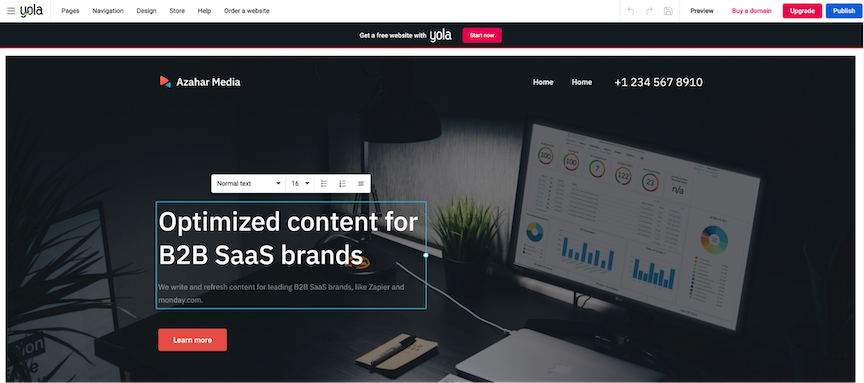
Credit: zapier.com
Designing Your Website
Creating a website can be a straightforward process. With NoCode University, you can build beautiful sites without any programming knowledge. Start by choosing a theme or template, then customize it to fit your style. Follow simple design tips to make your site engaging and user-friendly.
Selecting A Theme Or Template
NoCode University offers various themes and templates. These are beginner-friendly and ready to use. Choose a theme that aligns with your brand and goals. Look for themes that are responsive and visually appealing.
- Browse through the theme library.
- Pick a theme that suits your needs.
- Ensure the theme is mobile-friendly.
Customizing Your Theme
Once you’ve selected a theme, it’s time to make it your own. Customizing your theme is simple with NoCode University’s tools. Adjust colors, fonts, and layouts to match your brand identity. Add images and content that resonate with your audience.
- Change the color scheme to match your branding.
- Update fonts for better readability.
- Modify the layout for a unique look.
- Include high-quality images and graphics.
Design Tips For Beginners
Starting with web design can be intimidating. Here are some tips to help you create a professional-looking website:
| Tip | Description |
|---|---|
| Keep It Simple | Don’t overload your site with too many elements. |
| Consistency | Use consistent fonts, colors, and styles throughout your site. |
| Responsive Design | Ensure your site looks great on all devices. |
| High-Quality Images | Use sharp, professional images to enhance visual appeal. |
With NoCode University’s guidance, you can easily create a stunning website. The platform’s courses and community support will help you learn and grow.
Adding Content To Your Website
Adding content to your website is a crucial step. It helps engage visitors and provides valuable information. Let’s explore some essential aspects of content creation for your website.
Creating Essential Pages
Every website needs some essential pages. These are the foundation of your site and guide users through your content.
- Home Page: The first impression of your site. Keep it clean and informative.
- About Page: Share your story and mission. Make it personal and engaging.
- Contact Page: Provide ways for users to reach you. Include a form, email, and social links.
- Services/Products Page: Detail what you offer. Use clear descriptions and benefits.
- Blog Page: Regularly update with valuable content. Helps with SEO and user engagement.
Writing And Formatting Content
Writing and formatting content is key to keeping visitors on your site. Follow these tips for better readability:
- Use short paragraphs. Break up large blocks of text.
- Incorporate headings and subheadings. They help structure your content.
- Write in a conversational tone. Make it easy to understand.
- Use bullet points and numbered lists. They make information scannable.
- Highlight important keywords. It helps with SEO.
Using Images And Multimedia
Images and multimedia can enhance your content. They make your site visually appealing and engaging.
| Element | Use |
|---|---|
| Images | Break up text and add visual interest. Use high-quality images. |
| Videos | Explain complex ideas. Embed videos from YouTube or Vimeo. |
| Infographics | Summarize data and statistics. Make them shareable. |
| Audio | Add podcasts or music. Engage users in different ways. |
Remember, a well-structured and visually appealing website attracts and retains visitors. Keep your content fresh and relevant to ensure ongoing engagement.
Optimizing Your Website For Search Engines
Creating a website is just the beginning. To ensure your site reaches its audience, you need to optimize it for search engines. This process, known as SEO, helps improve your website’s visibility and ranking on search engine results pages (SERPs). Below, we break down essential SEO practices to help you get started.
Basic Seo Practices
- Keyword Research: Identify relevant keywords for your content. Use tools like Google Keyword Planner to find high-volume search terms.
- Quality Content: Create valuable, original content that addresses your audience’s needs. Ensure it is well-written and free from grammatical errors.
- Meta Tags: Include relevant keywords in your title tags, meta descriptions, and header tags. This helps search engines understand your content.
- Internal Linking: Link related pages within your website. This helps with navigation and improves the SEO of individual pages.
- Mobile Optimization: Ensure your website is mobile-friendly. Use responsive design to provide a good user experience on all devices.
Using Seo Tools And Plugins
Leverage SEO tools and plugins to streamline your optimization efforts. Popular options include:
| Tool/Plugin | Description |
|---|---|
| Yoast SEO | A plugin that helps optimize your content and meta tags for better search engine rankings. |
| Google Analytics | Tracks website traffic and provides insights into user behavior and engagement. |
| Google Search Console | Monitors your website’s presence in Google search results and identifies issues. |
Creating An Seo-friendly Url Structure
An SEO-friendly URL structure helps search engines and users understand your page content. Follow these tips:
- Use Keywords: Include relevant keywords in your URLs. This helps search engines understand the topic of your page.
- Keep It Simple: Create short, descriptive URLs. Avoid using unnecessary words or characters.
- Use Hyphens: Separate words with hyphens instead of underscores. Hyphens are more readable for both users and search engines.
- Avoid Dynamic URLs: Use static URLs instead of dynamic ones with query strings. They are easier for search engines to index.
By following these SEO best practices, you can enhance your website’s visibility and attract more traffic. Remember, SEO is an ongoing process. Regular updates and optimizations are necessary to maintain and improve your search engine ranking.
Launching Your Website
Launching your website is an exciting milestone. With NoCode University, you can create your site easily and efficiently. But before you go live, there are a few essential steps to ensure everything runs smoothly.
Testing Your Website
Before launching, it’s crucial to test your website thoroughly. Pay attention to the following areas:
- Functionality: Check all links, buttons, and forms.
- Compatibility: Ensure your site works on different browsers and devices.
- Performance: Test your site’s loading speed and optimize if necessary.
- Content: Verify that all text, images, and videos display correctly.
Using tools like Google Analytics and PageSpeed Insights can help identify and fix issues.
Final Checks Before Launch
Perform these final checks to ensure your website is ready:
- SEO: Optimize titles, meta descriptions, and headers for search engines.
- Security: Install an SSL certificate and ensure your site is secure.
- Backup: Create a backup of your website to prevent data loss.
- Analytics: Set up tracking with Google Analytics.
- Legal: Add privacy policy, terms of service, and cookie consent.
These steps are essential for a professional and secure website.
Making Your Website Live
Now, it’s time to make your website live:
- Domain: Connect your domain name to your website.
- Hosting: Ensure your hosting plan is active and sufficient for your site’s needs.
- Publish: Publish your website through your website builder or CMS.
Once your site is live, share it with your audience and monitor its performance. With NoCode University, you have the tools to build and launch a website quickly and easily.
Maintaining And Updating Your Website
Building a website quickly and easily is just the beginning. To ensure its success, you need to regularly maintain and update it. This involves keeping the content fresh, monitoring its performance, and safeguarding your data with regular backups. Below, we explore these crucial aspects.
Regular Content Updates
Regularly updating your website’s content is essential. Fresh content attracts visitors and improves SEO rankings. Consider the following tips to keep your content up-to-date:
- Blog Posts: Write new articles related to your niche.
- Product Updates: Add new products or update existing ones.
- News and Events: Inform your audience about upcoming events.
Using NoCode University, you can learn to create dynamic content with tools like Notion and Airtable, ensuring your website remains engaging and relevant.
Monitoring Performance And Analytics
Understanding how your website performs helps you make informed decisions. Monitoring tools provide insights into visitor behavior, traffic sources, and page performance. Here’s how you can keep track:
- Google Analytics: Use it to monitor traffic and user behavior.
- Heatmaps: Identify which parts of your site attract the most attention.
- SEO Tools: Track your rankings and optimize content for search engines.
NoCode University offers courses on integrating these tools, allowing you to gain valuable insights without coding knowledge.
Backing Up Your Website
Regular backups are crucial for protecting your website from data loss. Here’s how to ensure your data is safe:
- Automated Backups: Set up automatic backups using tools like Zapier.
- Cloud Storage: Store backups in secure cloud services.
- Manual Backups: Periodically download and save your website data locally.
With NoCode University’s Zap into Automation Course, you can learn how to automate backup processes, ensuring your data is always secure.
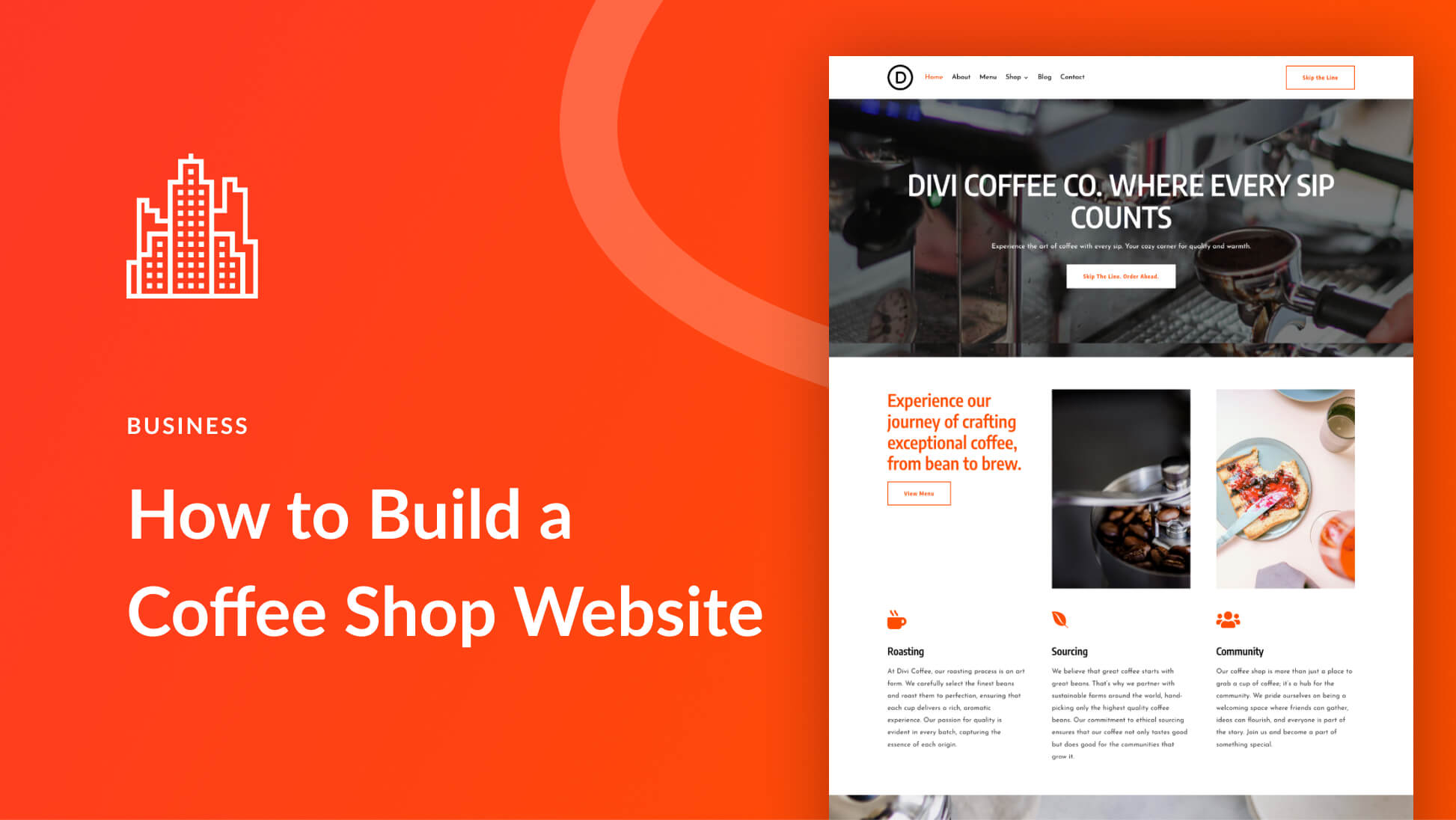
Credit: www.elegantthemes.com
Frequently Asked Questions
What Is The Fastest And Easiest Way To Create A Website?
Use website builders like Wix, Squarespace, or WordPress. They offer templates and drag-and-drop features for quick setup.
What Is The Easiest Website To Build?
The easiest website to build is with Wix. It offers drag-and-drop features, making it user-friendly for beginners.
Can I Make A Website In 2 Hours?
Yes, you can make a basic website in 2 hours. Use website builders like Wix, Squarespace, or WordPress.
Is Google Sites 100% Free?
Yes, Google Sites is completely free to use. You can create and host websites without any cost.
Conclusion
Building a website can be simple and quick. NoCode University offers courses to help you create websites without coding. Start learning today and enjoy lifetime access to expert-led tutorials. Dive into essential tools like Airtable, Notion, and Zapier. Transform your skills and launch your consulting business. For more information and to get started, visit NoCode University. Happy website building!

